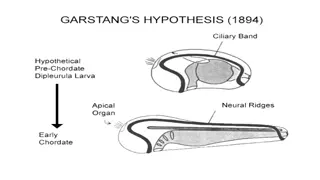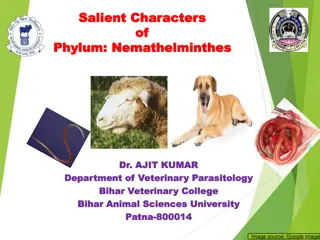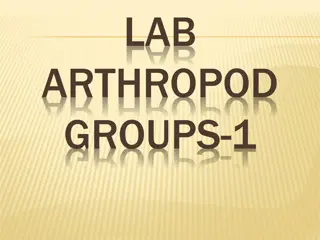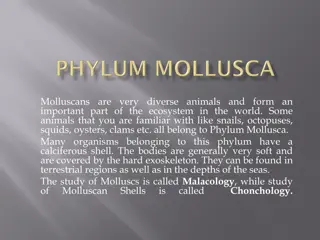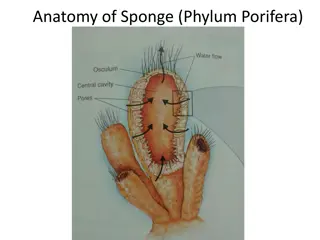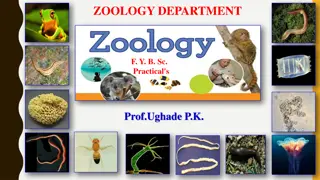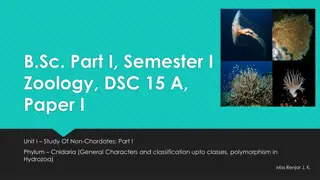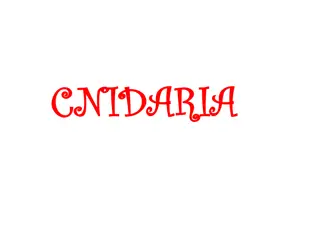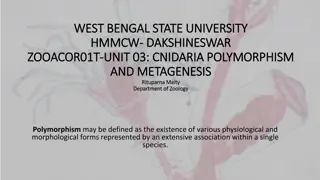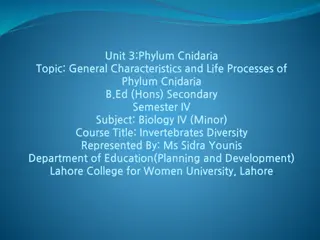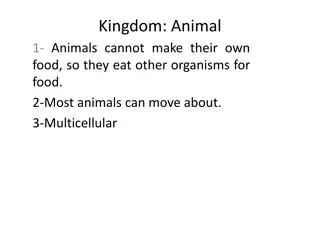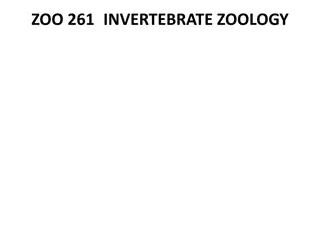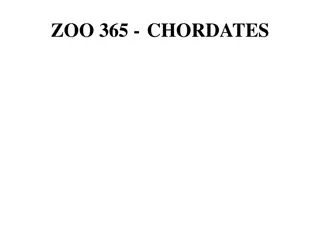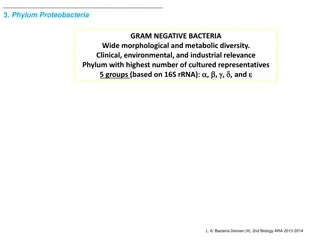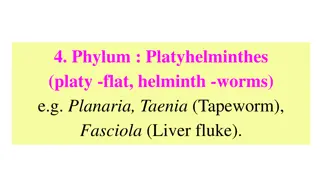Understanding the Unique Features of Phylum Cnidaria in Life Science
Phylum Cnidaria comprises diverse marine animals like jellyfish, sea anemones, corals, and Hydra, exhibiting radially symmetric bodies with unique structures called cnidocytes. These cnidocytes serve as sensory-effector cells that contain specialized stinging organelles called cnidae, aiding in defense and prey capture. The phylum showcases two distinct forms, the sessile polyps and the bell-shaped medusae, with a simple nerve network and reproductive strategies involving both sexual and asexual methods.
Download Presentation

Please find below an Image/Link to download the presentation.
The content on the website is provided AS IS for your information and personal use only. It may not be sold, licensed, or shared on other websites without obtaining consent from the author. Download presentation by click this link. If you encounter any issues during the download, it is possible that the publisher has removed the file from their server.
E N D
Presentation Transcript
CNIDARIA Life Science Sem 1
Cnidocyte: Unique and defining feature of this phylum A combined sensory-effector cell. Cnidocytes have a single sensory cilium thus are called as the independent sensory-effector cells. Each Cnidocyte has a Cnida or a fluid-filled membranous capsule containing a long tubular invagination of the capsule wall. When the cnidocyte receives appropriate stimulation, the tubule everts explosively to the exterior. Depending upon the type of Cnidae the everted tubule may sting or paralyze the prey by releasing the toxin.
General Characteristic features Phylum Cnidaria includes diverse animals like jelly fish, sea anemones, corals and the more familiar Hydra. They are diploblastic eumetazoans with tissue grade of organization. The cnidarians are characterized by the presence of Cnidocytes, polyp and medusa forms.
General characters continued These are mostly marine and a few like hydra live in fresh water Many are colonial (Eg: Corals). Some are solitary (Eg: sea anemone) They are diploblastic and show tissue grade of organization The body is radially symmetric but sea anemones show biradial symmetry Polyp and medusa re the two different forms of cnidarians. Polyp is hydroid form which is sessile with mouth-up orientation. Medusa is umbrella or bell shaped with mouth down orientation. It swims by constricting the bell. The body wall is composed of an outer epithelium called as epidermis, an inner epithelium called gastrodermis, a gelatinous mesoglea between the outer and inner epidermis. Mesoglea consists of amoeboid cells derived from ectoderm. Mesoglea is thin in polyps. It is thick in medusa, in which it is important in buoyancy. The body wall contains stinging cells called as cnidocytes. Hence the name cnidaria. Each cnidocyte cell contains a fluid filled membranous capsule called cnida. Cnidocytes help in defence and capture of prey. The blind sac-like central cavity is called coelenterons or gastro vascular cavity. Hence the name Coelenterata. It opens out by mouth surrounded by tentacles. Mouth serves for ingestion as well as for egestion. In medusa form the coelenterons is specialized into stomach, radial canals and ring canal. Coelenterons helps in digestion and circulation.
General characters continued Digestion is first extracellular in the coelenterons and then intracellular in the nutritive muscular cells of gastrodermis. Exchange of respiratory gases and elimination f the excretory wates occurs by diffusion through the body wall. Neurons are interconnected to form a pair of nerve nets, one in epidermis and the other in the gastrodermis. The two nerve nets are joined by neurons that cross the mesoglea. Nerve impulse conduction is diffuse conduction. Nerve impulse can travel in any direction. Besides nerve nets, medusae have nerve rings and ganglia around the margin of the bell. Sensory structures like statocysts occur in the medusoid form Asexual reproduction takes place by budding, fission and fragmentation. Cnidarians are generally unisexual but some are bisexual. Fertilization is external. Cleavage is holoblastic. Development is indirect and includes a free swimming ciliated larval stage called planula. In species having polyp and medusa phases, the alternation of asexually reproducing polyp form and sexually reproducing medusa form is called as metagenesis. Cnidarians have remarkable power of regeneration.
CLASSIFICATION Phylum : Cnidaria [Cnidae/Cnidocytes] Class: Anthozoa/ Flower animals Exclusively marine The class comprising of sea anemones, corals, sea fans, sea pens, sea pansies. Largest Cnidarian Taxon with only Polyp stage and Medusa stage is absent. Only taxon that has all 3 types of Cnidae: nematocysts, trichocysts and ptychocysts. Clonal reproduction is widespread: fission, fragmentation and budding of polyps are primary modes of reproduction. Both Gonochorism and hermaphroditism are common. Gonads are merely the aggregations of germ cells. Mature gametes arise from endoderm and are shed into coelenteron and spawned through the mouth in most species. Fertilization is external but in some they develop in the coelenteron thus viviparous. The zygote develops into a planula larva. Planula larva metamorphosizes and the organism develops tentacles, septa and pharynx and attach to the substratum by aboral end.
Classification continued Phylum: Cnidaria Taxon: Medusozoa Cnidarians with Medusa stage in life cycle. Basic life cycle includes: A. Medusa B. Planula C. Polyp D. Medusa Medusozoans have tetramerous symmetry rather than circular in anthozoa. Cnidae are only nematocysts. Medusozoa has only 2 major classes : Scyphozoa [large jellies] and Hydrozoa [small jellies].



